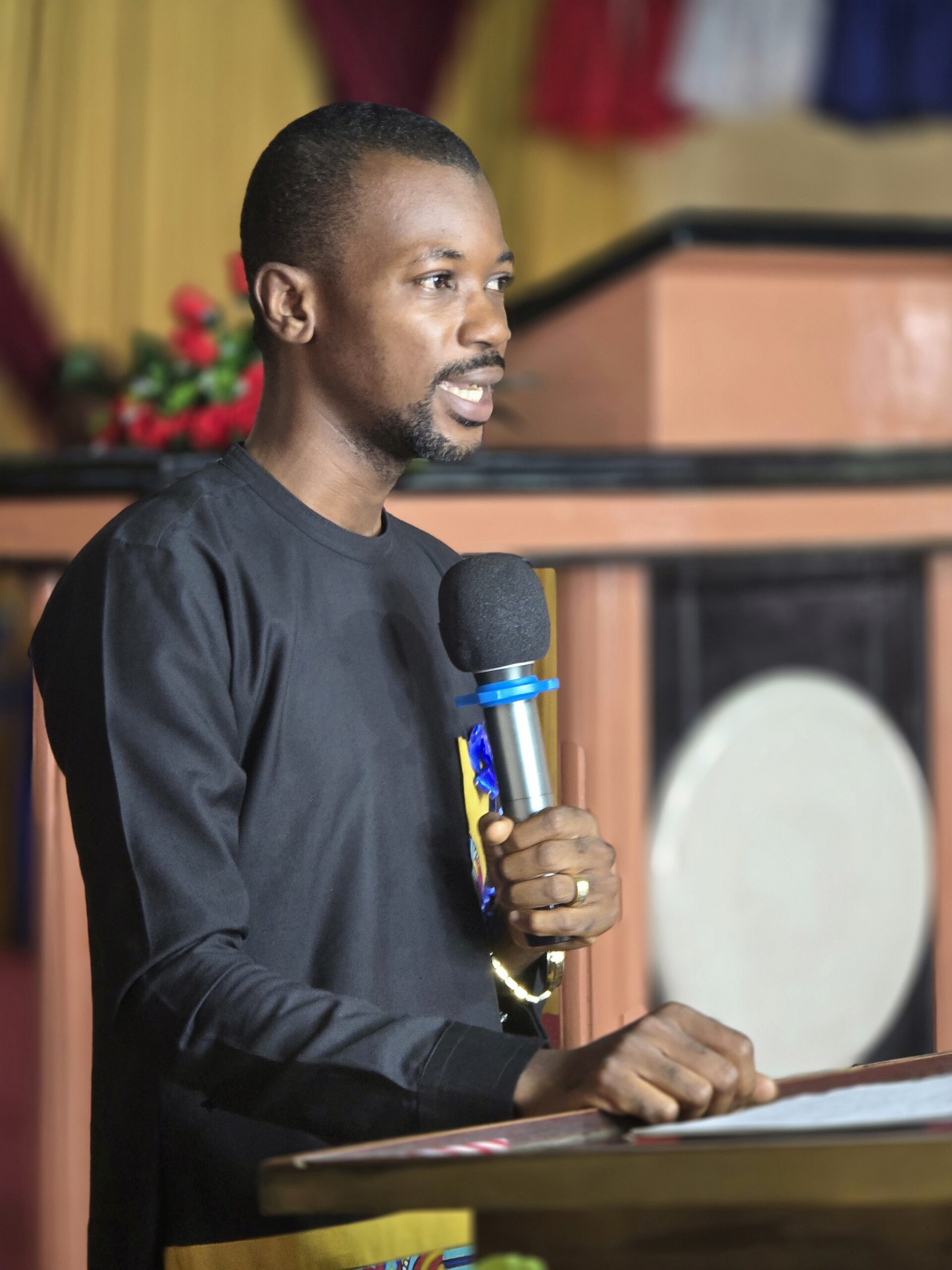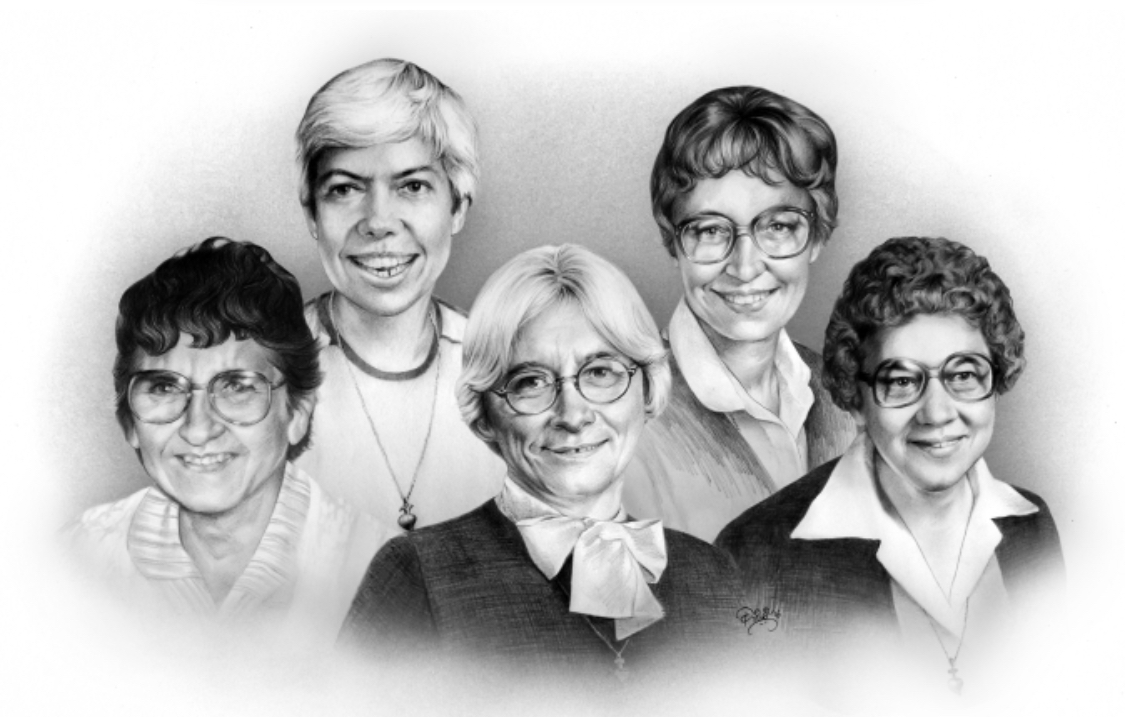This Week in October 1992, Five American nuns murdered by rebels in Liberia
…Who killed them, and why? A journalist’s account (PART I)
By James Kokulo Fasuekoi; Editor/Publisher
They were five nuns, and came from the heart of Illinois, best known as U.S. President Abraham Lincoln’s country. But two things brought all five together-the love of God and their desire to serve humanity- especially people caught up in war.
Their passion would lead them to join the Catholic Adorers of the Blood of Christ in Ruma, Illinois, and to perform humanitarian works for the needy, eventually leading all five of the nuns to war-torn Liberia.
But before her journey to Liberia years back, Sister Kathleen McGuire is reported to have traveled to war-ravaged El Salvador where she paid homage to the graves of four American nuns killed there decades ago while they were involved in humanitarian services.
Sister McGuire’s own decision to serve in Liberia, by all accounts, had been influenced by the deaths of those four nuns murdered in El Salvador, according to other accounts.
Sister Barbara Muttra, on the other hand, wasn’t a stranger to war. She had survived doing humanitarian work in Vietnam, one of America’s deadly wars during the 60s and 70s.
However, none of the five sisters had clue that they would die in Liberia in a similar cowardly fashion as their colleagues in El Salvador.
Monrovia comes under siege
A lull in fighting had gone on for about two years following the horrifying capture and subsequent torture to death of Liberia’s president, Samuel Doe, by Gen. Prince Johnson’s INPFL rebel forces on September 9, 1990.
After that dramatic but terrible event in 1990, INPFL soldiers led a military campaign along with soldiers of the ECOWAS peace monitoring group, ECOMOG and both pushed back Taylor’s rebels. They had occupied the city’s key northern-eastern suburbs that housed the national television and radio networks.
By July 1992, the steam of war started to pick up in Taylor’s Land. Residents in Monrovia’s suburbs began to notice movement of heavily armed NPFL men moving ever closer to the city. This had many panicking especially for those who had once been kidnapped and taken as captives by the front.
Prior, ECOMOG troops had let in truckloads of convoys carrying heavily armed NPFL’s men on a patrol reaching even as far as Waterside general market to catch a glimpse of city life. For peacekeepers, the exercise was a “confidence building” tour designed to induce as many as Taylor’s fighters to lay down their guns and return to city life.
In the weeks approaching “Operation Octopus,” people spotted Taylor’s rebels setting up fresh roadblocks near the Mount Barclay Buffer Zone and its surrounding. The move alarmed many, causing panic-stricken villagers in parts of the northern suburbs to leave their homes and moved in with friends and relatives in the heart of town.
The Inquirer dispatched a team of reporters and photographer (which included me) to Mount Barclay to ascertain the facts: the claim turned out to be true.
It prompted a news conference by ECOMOG Field Commander, Gen. Ishaya Baku.
Rather than institute a military action or warn Mr. Taylor and his NPFL acts inimical to the existing peace, Baku discounted the exercises as a mere ‘show’ of another of NPFL’s military maneuvers, urging the city’s nearly one and half million residents to stay calm and go about their normal businesses.
By this time Mr. Taylor had already transported bulks of his men into Monrovia and reportedly positioned in strategic locations including the surroundings of the ECOMOG Military Base on Bushrod Island, waiting to attack.
The NPFL also dispatched scores of its good fighters including Burkinabe’s mercenaries to the unoccupied swart of sprawling marshy land, considered a “No man’s Land” situated between Greater Monrovia and Gardnerville suburbs along the Mesurado River and Stockton Creek where they lied in wait.
Still, perhaps, the largest group of NPFL fighters turned to Gen. Johnson’s Caldwell Base where they encamped with their Gio and Manor siblings to wait for the “D-Day.”
It is still not quite clear if this was done with Johnson’s acquiescence but Gen. Samuel Varney, INPFL’s second man in command (also a Gio as Gen. Johnson), actually welcomed the “enemies” to his base.
NPFL’s fighters including Gen. Johnson and Varney often made references to Taylor’s NPFL as their “Mother unite” but both broke up with ‘Major’ Taylor in the first few months into the battle and formed their Independent National Patriotic Front as they approached the capital.
Both Johnson and Varney later severed ties with Dr. Amos Sawyer’s Interim Government of National Unity (IGNU) about a year following the arrival of IGNU, citing reason to be “corruption and betrayal” of trust in the new administration.
INPFL had been hailed by Liberians, ECOWAS and international community leaders for making room to let Africa’s first multinational peacekeeping troops (led by Nigeria, Africa’s Superpower) put boots to the ground on August 24, 1990 despite fierce battle and opposition by Taylor’s NPFL

Operation octopus & massacres
Nicknamed “Operation Octopus,” it became nothing less than a campaign of death and destruction in addition to mass kidnapping led by Major Charles Taylor’s forces on October 15, 1992 in a desperate move to seize Monrovia-the only place left in Liberia out of his grasp.
This was perhaps, Taylor’s last chance at seizing state power through the barrels of the guns and have himself installed as “president” of the republic of Liberia. His forces in 1990, had sat for months at the UL campus, just a stone-throwing distance from the presidential palace before being beaten back by the combined ECOMOG and INPFL forces.
Now, troubled over his loss, his dreaded NPFL was returning under an atmosphere full of anger and vendetta to finish the task in whatever way possible in order to deliver the presidency to their master.
With fierce battle raging amid heavy RPG fire, near their Barnesville convent for days, the five Catholic nuns, Sister Mary Joel Kolmer, Sister Shirley Kolmer, Sister Barbara Ann Muttra, Sister Agnes Mueller and Sister Kathleen McGuire decided to stay put in their compound, hopping the fighting would die down so they could move around and work.
For all five sisters, there wasn’t anything much to fear. After all, they were Americans-didn’t belong to any faction in the war-and were providing humanitarian aids to needy people far and near the frontlines of Liberia’s deadly war that had gone on for almost three years.
By the sixth day on October 20, when fighting seemed to have died down, their compound security guard wanted to check on his family. So both Sister Barbara and Sister Mary, according to eyewitnesses, jumped in their small car to drive him home not too far from the covenant.
Then the day went by but neither the security guard nor any of the sisters showed up at the convent, a situation the further exacerbated suspicion on the part of the remaining sisters about the possibility of an accident or foul play against them by rebel troops controlling the area.
It turned out that while the two sisters along with their security guard drove toward a curve popularly known as “bent-stop” along Barnesville road, a band of NPFL fighters on a stake-out launched a rocket propelled grenade (RPG) into their vehicle thus killing them instantly.
The man accused of killing them was under the command of Christopher Vambo, a strong Taylor’s rebel general who took control of that portion of the suburb, assisted by Gen. Martina Johnson, another of Taylor’s Octopus war architect.(JKF/War Crimes Suspect/Mar 18/15).

On October 23rd, based on a series of narrations provided to the Catholic Diocese of Liberia, and U.S. investigators, a group of NPFL men armed with AK-47s raffles moved toward the main entrance to the convent and started to shoot indiscriminately.
Eyewitnesses in the area including Liberian female helpers, who worked for the nuns, recalled that Gen. Vambo and his men ordered occupants of the compound to open the gate and step forward; when the women did the fighters demanded money and cars.
Whatever happened next seemed unclear except that Sister Kathleen who opened the gate got shot by one of Vambo’s fighters and she fell to the ground and bled profusely, witnesses explained.
NPFL Commander Christopher Vambo (no relation to Journalist John Vambo), then angrily pulled Sister Shirley and Sister Agnes aside and accused both of “taking side with Taylor’s enemies.” That’s when a fighter under Vambo’s command and identified as “Black devil” opened fire and executed both.
The remaining survivors of that massacre, mostly female workers at the compound were kidnapped and forced to trek a 30-35 miles journey deep into rebel territories, Kakata, they told investigators.
Sister Shirley Kolmer, 61, once served as principal of St. Patrick High School, one of the country’s top rated schools where one of Liberia’s known warlords, Alhaji Kromah who early on led mainstream ULIMO, graduated.
To be continued:











